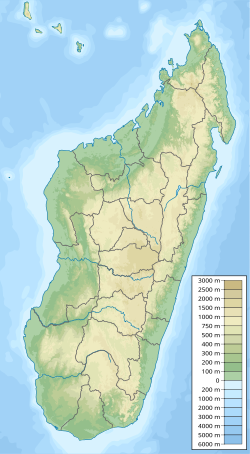| Ankazomihaboka Formation | |
|---|---|
| Stratigraphic range: Coniacian ~ | |
| Type | Geological formation |
| Underlies | Marovoay Beds |
| Overlies | Basalt |
| Lithology | |
| Primary | Claystone, sandstone |
| Location | |
| Coordinates | 16°12′S46°42′E / 16.2°S 46.7°E |
| Approximate paleocoordinates | 34°54′S37°48′E / 34.9°S 37.8°E |
| Region | Boeny, Mahajanga Province |
| Country | Madagascar |
| Extent | Mahajanga Basin |
Location of the formation in Madagascar | |
The Ankazomihaboka Formation is a Coniacian geologic formation in the Mahajanga Basin of northwestern Madagascar. The formation comprises claystones and sandstones deposited in a fluvial to lacustrine environment. [1] The formation is overlain by the Marovoay Beds and overlies basalt. [2]
Contents
Dinosaur remains diagnostic to the genus level are among the fossils that have been recovered from the formation. [3]
